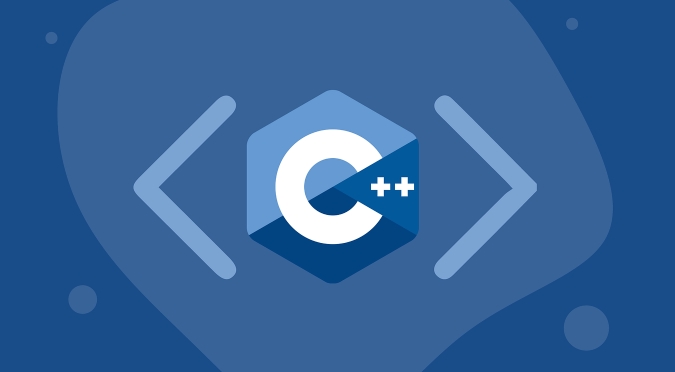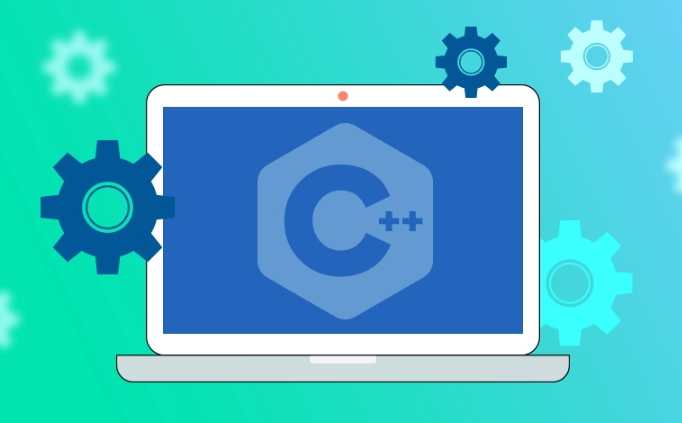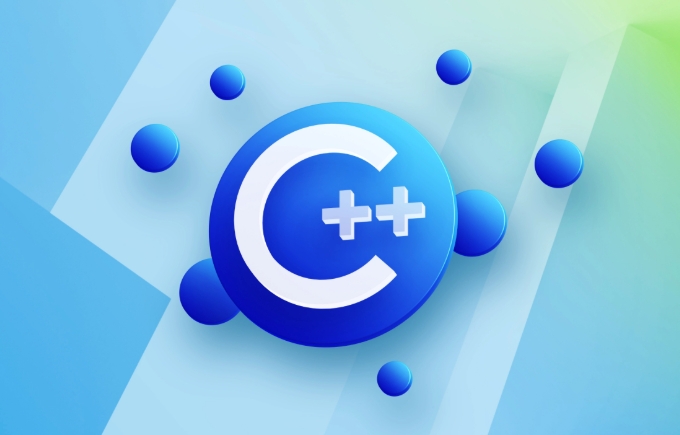std::is_same is used to determine whether the two types are exactly the same at compile time and return a bool value. 1. In the basic usage, std::is_same

std::is_same is a type trait provided by the <type_traits></type_traits> header file in the C standard library, which is used to determine whether the two types are exactly the same at compile time. It returns a bool value, accessing the result via ::value .

Here is a clear example of using std::is_same :
Basic usage examples
#include <iostream>
#include <type_traits>
int main() {
std::cout << std::boolalpha; // output true/false instead of 1/0
//Judge basic type std::cout << "int and int: "
<< std::is_same<int, int>::value << '\n'; // true
std::cout << "int and const int: "
<< std::is_same<int, const int>::value << '\n'; // false
std::cout << "int and int&: "
<< std::is_same<int, int&>::value << '\n'; // false
std::cout << "int and int&&: "
<< std::is_same<int, int&&>::value << '\n'; // false
std::cout << "int and double: "
<< std::is_same<int, double>::value << '\n'; // false
// Pointer type std::cout << "int* and int*: "
<< std::is_same<int*, int*>::value << '\n'; // true
std::cout << "int* and const int*: "
<< std::is_same<int*, const int*>::value << '\n'; // false
// Reference type std::cout << "int& and int&: "
<< std::is_same<int&, int&>::value << '\n'; // true
// Use remove_const to compare std::cout << "remove_const_t<const int> and int: "
<< std::is_same<std::remove_const_t<const int>, int>::value << '\n'; // true
// Use remove_reference to remove reference std::cout << "remove_reference_t<int&> and int: "
<< std::is_same<std::remove_reference_t<int&>, int>::value << '\n'; // true
return 0;
}Output result:
int and int: true int and const int: false int and int&: false int and int&&: false int and double: false int* and int*: true int* and const int*: false int& and int&: true remove_const_t<const int> and int: true remove_reference_t<int&> and int: true
Practical application scenarios
std::is_same is often used in template metaprogramming, such as:

- Conditional compilation logic (with
if constexpr) - Overload or specialized templates
- Type Safety Check
Example: Different logic is executed according to the type in the function template
#include <iostream>
#include <type_traits>
#include <string>
template<typename T>
void printType(const T& value) {
if constexpr (std::is_same_v<T, int>) {
std::cout << "Integer: " << value << '\n';
} else if constexpr (std::is_same_v<T, double>) {
std::cout << "Double: " << value << '\n';
} else if constexpr (std::is_same_v<T, std::string>) {
std::cout << "String: " << value << '\n';
} else {
std::cout << "Unknown type\n";
}
}
int main() {
printType(42); // Integer
printType(3.14); // Double
printType(std::string{"Hello"}); // String
return 0;
}? Note: From C 17,
std::is_same_v<t u></t>can be used as the abbreviation ofstd::is_same<t u>::value</t>.
Basically that's it. std::is_same is one of the cornerstones of type judgment, and it is very flexible to use with other type traits.

The above is the detailed content of C std::is_same example. For more information, please follow other related articles on the PHP Chinese website!

Hot AI Tools

Undress AI Tool
Undress images for free

Undresser.AI Undress
AI-powered app for creating realistic nude photos

AI Clothes Remover
Online AI tool for removing clothes from photos.

Clothoff.io
AI clothes remover

Video Face Swap
Swap faces in any video effortlessly with our completely free AI face swap tool!

Hot Article

Hot Tools

Notepad++7.3.1
Easy-to-use and free code editor

SublimeText3 Chinese version
Chinese version, very easy to use

Zend Studio 13.0.1
Powerful PHP integrated development environment

Dreamweaver CS6
Visual web development tools

SublimeText3 Mac version
God-level code editing software (SublimeText3)

Hot Topics
 What is high-frequency virtual currency trading? The principles and technical implementation points of high-frequency trading
Jul 23, 2025 pm 11:57 PM
What is high-frequency virtual currency trading? The principles and technical implementation points of high-frequency trading
Jul 23, 2025 pm 11:57 PM
High-frequency trading is one of the most technologically-rich and capital-intensive areas in the virtual currency market. It is a competition about speed, algorithms and cutting-edge technology that ordinary market participants are hard to get involved. Understanding how it works will help us to have a deeper understanding of the complexity and specialization of the current digital asset market. For most people, it is more important to recognize and understand this phenomenon than to try it yourself.
 Explain RAII in C
Jul 22, 2025 am 03:27 AM
Explain RAII in C
Jul 22, 2025 am 03:27 AM
RAII is an important technology used in resource management in C. Its core lies in automatically managing resources through the object life cycle. Its core idea is: resources are acquired at construction time and released at destruction, thereby avoiding leakage problems caused by manual release. For example, when there is no RAII, the file operation requires manually calling fclose. If there is an error in the middle or return in advance, you may forget to close the file; and after using RAII, such as the FileHandle class encapsulates the file operation, the destructor will be automatically called after leaving the scope to release the resource. 1.RAII is used in lock management (such as std::lock_guard), 2. Memory management (such as std::unique_ptr), 3. Database and network connection management, etc.
 Using std::optional in C
Jul 21, 2025 am 01:52 AM
Using std::optional in C
Jul 21, 2025 am 01:52 AM
To determine whether std::optional has a value, you can use the has_value() method or directly judge in the if statement; when returning a result that may be empty, it is recommended to use std::optional to avoid null pointers and exceptions; it should not be abused, and Boolean return values or independent bool variables are more suitable in some scenarios; the initialization methods are diverse, but you need to pay attention to using reset() to clear the value, and pay attention to the life cycle and construction behavior.
 C vector get first element
Jul 25, 2025 am 12:35 AM
C vector get first element
Jul 25, 2025 am 12:35 AM
There are four common methods to obtain the first element of std::vector: 1. Use the front() method to ensure that the vector is not empty, has clear semantics and is recommended for daily use; 2. Use the subscript [0], and it also needs to be judged empty, with the performance comparable to front() but slightly weaker semantics; 3. Use *begin(), which is suitable for generic programming and STL algorithms; 4. Use at(0), without manually null judgment, but low performance, and throw exceptions when crossing the boundary, which is suitable for debugging or exception handling; the best practice is to call empty() first to check whether it is empty, and then use the front() method to obtain the first element to avoid undefined behavior.
 How to develop AI-based text summary with PHP Quick Refining Technology
Jul 25, 2025 pm 05:57 PM
How to develop AI-based text summary with PHP Quick Refining Technology
Jul 25, 2025 pm 05:57 PM
The core of PHP's development of AI text summary is to call external AI service APIs (such as OpenAI, HuggingFace) as a coordinator to realize text preprocessing, API requests, response analysis and result display; 2. The limitation is that the computing performance is weak and the AI ecosystem is weak. The response strategy is to leverage APIs, service decoupling and asynchronous processing; 3. Model selection needs to weigh summary quality, cost, delay, concurrency, data privacy, and abstract models such as GPT or BART/T5 are recommended; 4. Performance optimization includes cache, asynchronous queues, batch processing and nearby area selection. Error processing needs to cover current limit retry, network timeout, key security, input verification and logging to ensure the stable and efficient operation of the system.
 C bit manipulation example
Jul 25, 2025 am 02:33 AM
C bit manipulation example
Jul 25, 2025 am 02:33 AM
Bit operation can efficiently implement the underlying operation of integers, 1. Check whether the i-th bit is 1: Use n&(1
 C std::stringstream example
Jul 20, 2025 am 03:09 AM
C std::stringstream example
Jul 20, 2025 am 03:09 AM
std::stringstream is used in C for string conversion, splitting and splicing strings with basic data types. 1. You can convert the string to int, float, double and other types, use the >> operator to extract the value, and check whether it is successful through ss.fail(); 2. You can process compound strings and extract multiple fields with spaces or separators, which are suitable for parsing CSV files and other scenarios; 3. Support
 C std::is_same example
Jul 24, 2025 am 03:22 AM
C std::is_same example
Jul 24, 2025 am 03:22 AM
std::is_same is used to determine whether the two types are exactly the same at compile time and return a bool value. 1. In the basic usage, std::is_same::value is true when T and U are exactly the same, otherwise it is false. Different modifiers such as const, reference, pointer, etc. will cause false; 2. You can remove the type modification with std::remove_const, std::remove_reference and other types, and then compare it to achieve more flexible type judgment; 3. It is often used in template metaprogramming in practical applications, such as conditional compilation with ifconstexpr, and perform different logic according to different types; 4.






